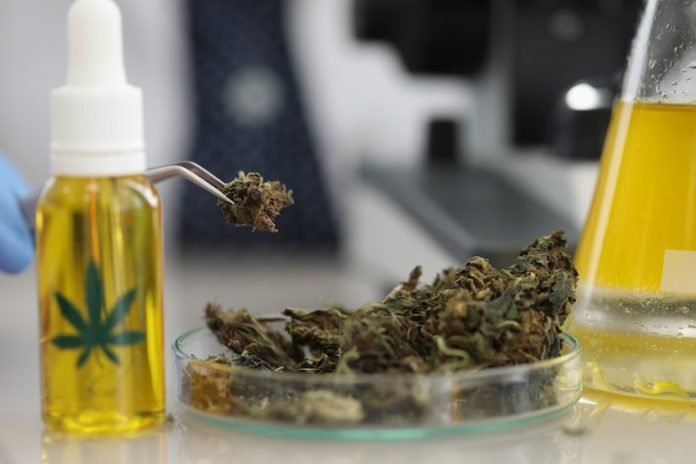
In recent years, the use of cannabis, also known as marijuana, has increased, and so has its strength.
This rise has led to a growing number of people experiencing mental health issues related to cannabis.
A new review by the University of Maryland School of Medicine, published in the New England Journal of Medicine, emphasizes the urgent need for doctors to be aware of and treat people with cannabis use disorder.
This disorder happens when someone’s use of cannabis causes significant problems in their life.
In 2021, nearly one in five Americans over the age of 12 used cannabis. More than 16 million people fit the criteria for cannabis use disorder, as defined by the American Psychiatric Association.
This problem is especially common among young adults between the ages of 18 and 25, with over 14% in this age group affected by the disorder.
David A. Gorelick, MD, Ph.D., a Professor of Psychiatry at the University of Maryland School of Medicine, who authored the review, highlighted a common misunderstanding about cannabis.
Many people think it’s safe and has no side effects, but it can be addictive and lead to serious problems. He stressed the importance of recognizing the signs and symptoms of cannabis use disorder to get the right diagnosis and treatment.
Cannabis use disorder is when someone craves cannabis and can’t control their use, even when it causes problems at work or school. It’s most common in people who use cannabis more than four times a week.
Having another substance use disorder or a mental health condition can also increase the risk of developing cannabis use disorder.
Dr. Gorelick noted that almost half of the people with this disorder also have another psychiatric condition like major depression, post-traumatic stress disorder, or generalized anxiety disorder. Therefore, getting the right psychiatric treatment is crucial.
Physical signs of cannabis use disorder can vary, including yellowing of the fingertips and increased depression and anxiety while using cannabis.
To be diagnosed, a patient must meet at least two criteria set by the American Psychiatric Association, like doing poorly at work or school because of cannabis use or experiencing withdrawal symptoms.
The review also revealed that cannabis use accounts for 10% of all drug-related emergency room visits in the U.S. and is linked to a higher chance of car accidents. People between 18 and 25 years old had the highest rate of cannabis-related emergency room visits in 2022.
According to Mark T. Gladwin, MD, Dean of the University of Maryland School of Medicine, about one in ten people who use cannabis will become addicted. This rate is even higher for those who start using cannabis before age 18.
The University of Maryland School of Medicine is committed to understanding more about addiction, including why some people are more prone to it.
The school recently opened the Kahlert Institute for Addiction Medicine to study addiction and train medical professionals in addiction medicine.
Currently, there are seven recognized disorders related to cannabis use, such as cannabis-induced anxiety disorder and cannabis-induced psychotic disorder.
To diagnose these conditions, the U.S. Preventive Services Task Force recommends screening adolescents and adults in primary care settings.
While no medication is approved by the FDA for treating cannabis use disorder, therapies like Cognitive Interactive Therapy and Motivational Enhancement Therapy can help.
These therapies aid patients in managing their thoughts and behaviors related to cannabis use. Adolescents may benefit from family-based treatment options.
Despite the availability of therapy through telehealth services, barriers like the stigma around mental illness and addiction and the shortage of mental health professionals still make it hard for many patients to get treatment.
Dr. Gorelick emphasized the importance of overcoming these barriers to help those struggling with cannabis use disorder.
If you care about smoking, please read studies about why some non-smokers get lung disease and some heavy smokers do not, and smoking cessation drug may help treat Parkinson’s disease.
For more information about heart health, please see recent studies about new way to prevent heart attacks and strokes, and results showing this drug for heart disease may reduce COVID-19 risk.
The research findings can be found in New England Journal of Medicine.
Copyright © 2024 Knowridge Science Report. All rights reserved.



